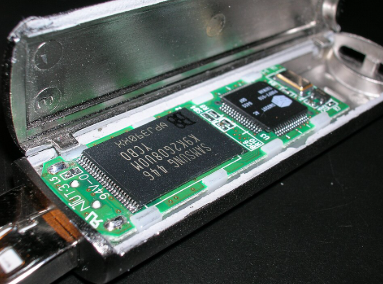In the world of digital storage, flash memory plays a big role in how we store and access data. One of the popular types is MLC flash memory, which stands for Multi-Level Cell. It’s widely used in SSDs (Solid State Drives), USB drives, memory cards, and other storage devices.
MLC flash memory is known for offering a balance between storage capacity and cost. But what exactly does it do, and how is it different from other types of flash memory like SLC or TLC? This guide will explain everything in simple terms so anyone can understand. Technology Updates
What Does MLC Flash Memory Mean?
MLC stands for Multi-Level Cell, which means each memory cell in the chip can store more than one bit of dataspecifically, two bits. This is different from SLC (Single-Level Cell) memory, which stores just one bit per cell.
By storing more bits in the same space, MLC helps increase storage capacity without needing more physical chips. This makes MLC flash cheaper and more practical for most consumer-level devices, especially in devices like SSDs, USB drives, and memory cards.
How MLC Flash Memory Works
To understand MLC, think of a memory cell like a small storage box. In SLC, the box holds only two possible values: 0 or 1. In MLC, the same box now has four possible states: 00, 01, 10, or 11. This is possible by controlling how much electric charge is stored in the cell.

Because MLC stores two bits per cell, it needs more precise control of voltage levels. That also means the memory controller must work harder to write and read data accurately. This can make MLC slightly slower than SLC, but it still performs well for most everyday use.
Advantages of MLC Flash Memory
One of the biggest advantages of MLC is its cost-effectiveness. Since it can store more data in the same amount of physical space, manufacturers can offer higher storage capacities at a lower price. This is why MLC is often found in mid-range SSDs and other storage devices. Latest AI News
Another advantage is that MLC strikes a balance between performance, cost, and reliability. It’s not as expensive as SLC and not as slow or short-lived as TLC (Triple-Level Cell). For most users who don’t need extreme performance, MLC is a great all-around option.
Disadvantages and Limitations
While MLC is more affordable than SLC, it does come with some trade-offs. The main one is lower endurance. MLC flash cells can usually handle around 3,000 to 10,000 write cycles, while SLC can last for over 50,000 cycles. This makes MLC less ideal for write-heavy environments.
Also, MLC can be slightly slower than SLC because it takes more time to read and write multiple bits per cell. This doesn’t usually affect regular users much, but for professionals working with large data files or servers, speed and endurance are crucial factors.
MLC vs SLC vs TLC vs QLC: What’s the Difference?
Understanding flash memory means knowing how MLC compares to other types. SLC stores 1 bit per cell (fastest and longest-lasting), MLC stores 2 bits (balanced), TLC stores 3 bits (cheaper but slower), and QLC stores 4 bits (highest capacity but least durable).
SLC is ideal for industrial and enterprise uses. MLC is great for prosumers and high-end consumer electronics. TLC is now widely used in budget SSDs and smartphones Environment Sustainability and QLC is still new and used mainly in large-capacity SSDs where read speed is more important than durability.
Where MLC Flash Memory Is Used
MLC flash is commonly found in internal and external SSDs, USB flash drives, SD cards, and even some gaming consoles and laptops. It is perfect for devices that need a good amount of storage at a reasonable price without compromising too much on speed.

Some data centers and business systems also use MLC flash for storage where performance matters but budgets don’t allow for the higher cost of SLC. It’s seen as a reliable option that offers good value in a wide variety of tech products.
Is MLC Flash Right for You?
If you’re a regular user looking for reliable storage at a fair price, MLC flash is often a smart choice. It offers better endurance than TLC and more capacity than SLC at a lower cost. It’s ideal for activities like browsing, gaming, media storage, and everyday work.
However, if you’re dealing with very frequent writes like video editing, server storage, or big data analytics you might want to invest in SLC or enterprise-grade SSDs. Still, for most users, MLC offers a perfect mix of durability, performance, and price.


 China’s Military Goes All Out in Space
China’s Military Goes All Out in Space  How AI Tools Are Helping Students Study Smarter in 2025
How AI Tools Are Helping Students Study Smarter in 2025